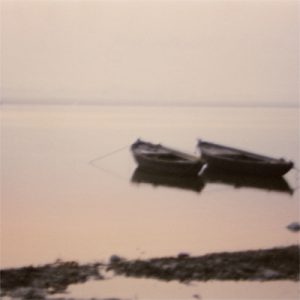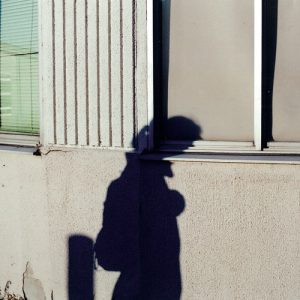Some releases are as much art objects as recordings, a perfect example being this beautiful seven-inch affair from Will Long (aka Celer) and Rutger Zuydervelt (aka Machinefabriek), which is worth purchasing on grounds of presentation alone. Long obtained the artwork for the project in a nostalgia shop in Jimbocho, Tokyo, after which, in true collaborative spirit, Zuydervelt designed the sleeve. Adding to the release’s allure, the hand-numbered edition of 250 comes with a download that includes two videos by Marco Douma. How did the release come about? After performing together in Tokyo in November 2010, the two began a long-distance file exchange last fall (between Tokyo and Rotterdam) that drew upon hours of material and resulted in the two tracks issued.
The A-side’s “Maastunnel” (the tunnel that connects the banks of the Nieuwe Maas in Rotterdam) achieves a lovely balance between musical elements and field recordings in augmenting softly whistling waves of shimmering, Celer-like serenity with sounds of water gently lapping ashore, faint traffic noise, and assorted creaks and industrial noise. The result is a masterfully controlled meditation that leaves a strong impression, no matter its brevity. The sense of wonderment carries over to “Mt. Mitake” (a mountain to the west of Tokyo), where glassy tones chime softly and induce a state of calm in the listener. Some degree of turbulence emerges halfway through, however, and the whole thing begins to feel as if it’s being smothered by a dark, suffocating cloud of dust and grime.
Their respective personae are so well established—not counting the collaboration, Discogs lists (at the time of this writing) sixty-nine by Celer and ninety-nine by Machinefabriek—that it comes as a bit of a shock to discover they’d not collaborated prior to this release. Regardless, though the single’s two pieces weigh in at slightly less than ten minutes, they’re an exquisite pair nonetheless, and certainly suggest that some further, more extensive collaboration wouldn’t be unwelcome.

